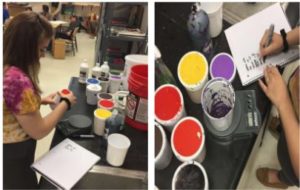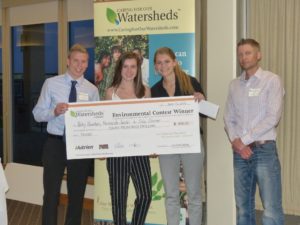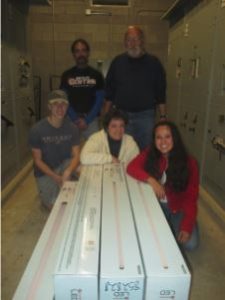 2018, Sacramento, California, USA
2018, Sacramento, California, USA

Justis Cooper had a unique idea to build a bike/ pedal powered generator students could use in the school workout room to charge their cell phones. This project will help demonstrate an energy-saving device (by “self” producing energy through pedaling) and encourage interest in sustainable technology at his school, The MET Sacramento.
Justis interns at a bike shop in Sacramento, so he had some “industry” knowledge and a mentor to help him complete his project. He plans on including signage by the bike to highlight the project and so students understand what they are using, how it works, and the potential energy savings. Stay fit and fully charged!















